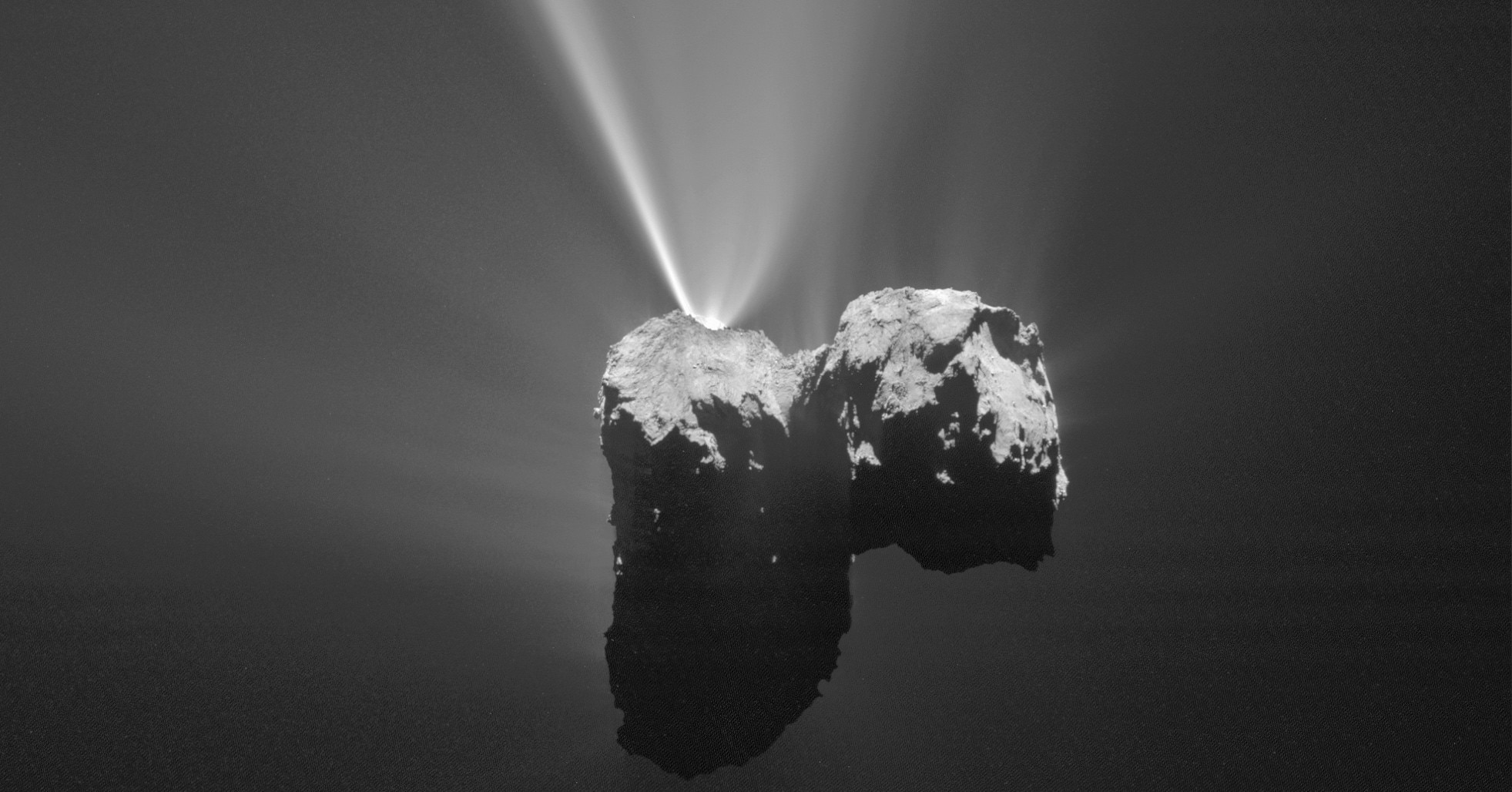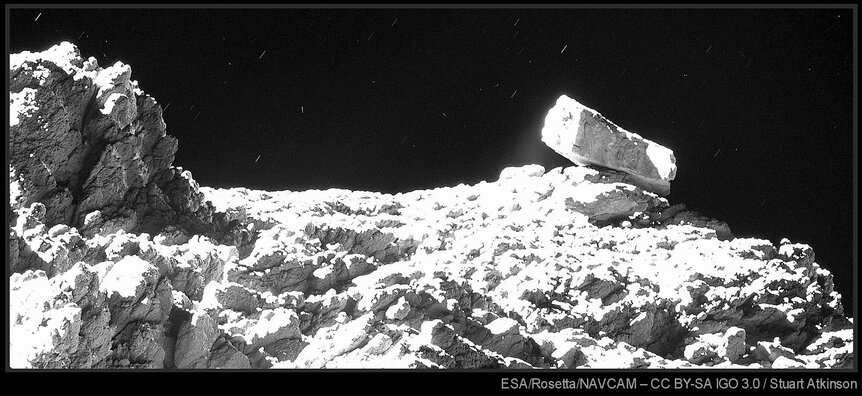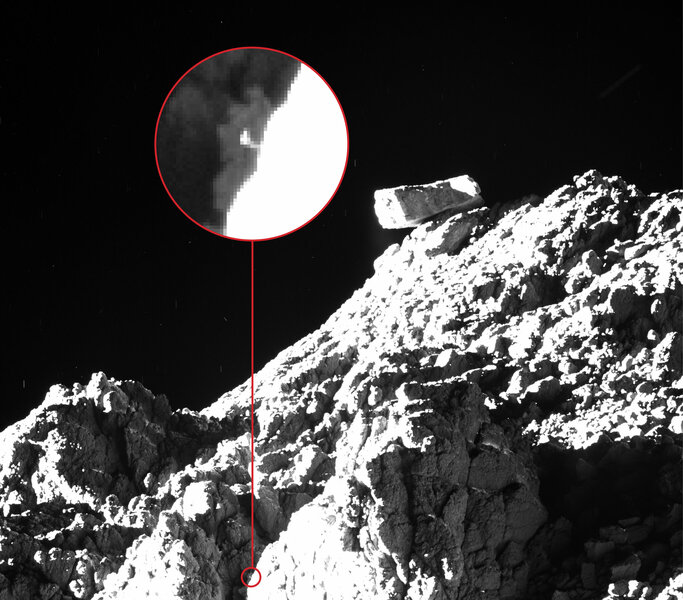Create a free profile to get unlimited access to exclusive videos, sweepstakes, and more!
The Rosetta image archive of its target comet is now complete. Wanna peruse 100k images of an alien world?

In August 2014, the European Space Agency spacecraft Rosetta entered orbit around the solid nucleus of the comet 67P/Churyumov-Gerasimenko. It stayed enthralled to the comet’s meager gravity for the next two years, taking jaw-dropping images and measurements of the comet’s environment that would change the way we understand these small solar system objects.
And now, about two years after Rosetta ended its mission by soft-landing on the surface of 67P, all the high-resolution images using its OSIRIS camera have been processed and are now publicly available on ESA servers. If you want to see them all, you’d better pack a lunch: There are over 100,000 of them.
Oh, but the treasures therein.
I’ve written about this mission many, many times, and you’ll get a taste of the images in those articles. One in particular came to my attention recently when writer and amateur astronomer Stuart Atkinson tweeted about a shot from Rosetta he processed. It’s stunning:
Whoa. It’s, quite literally, like nothing on Earth. That block is something like 10-15 meters long, and were it sitting on Earth I’d expect it to weigh upwards of a couple of hundred tons. On the comet, it would weigh 1/10,000th of that*.
It’s also layered, which is intriguing. On Earth, rocks like that would be sedimentary, likely laid down by seasonal water deposits like you’d see in old sea beds. But there’s no water flow on a comet! So why the layers? Well, there are seasonal changes on a comet; as it orbits the Sun on an elliptical trajectory, it gets warmer when it gets closer to the Sun†. Carbon dioxide and water ice can sublimate, go directly from solid to gas, and flow out of vents and cracks on the comet’s surface. There’s no atmosphere to speak of either, but this gas does push things around a bit, and some could redeposit on the surface. Over thousands and millions of years you’d get layering in the surface.
This rock is perched in the Ma’at region of the smaller of the two lobes making up the rubber-ducky-shaped comet, and layering was seen in various parts of that area.
The image above by Stuart Atkinson is cropped from the original, which has another piece of wonder in it as well: It shows the final resting place of the tiny Philae lander!
Philae was launched from Rosetta in 2014, but bounced off the comet and skidded to a stop quite some ways from the intended landing spot, and took a huge effort (and a lot of time) to eventually find. I have the story in a previous article, and I encourage you read it. It’s quite a tale.
In fact, the entire saga of Rosetta is an amazing tale. It was the first spacecraft to orbit a comet, and the first to send a lander down to one. While the reason for the odd shape of the comet still isn’t 100% certain, many good hypotheses have been put forward, all based on data from Rosetta… and given that we see a doubled-lobed shape in many asteroids and comets, figuring this out will explain the formation mechanism of a big chunk of solar system objects.
Oh, I could go on, and on… but you know what? ESA created a video called “Ambition” about why Rosetta was designed, built, and launched to a comet, what we humans hoped to learn there. I’ll leave you with it, because the emotional impact of it is far more than I can convey in words.
Rosetta spent 26 months orbiting a comet, and will remain on its surface for the foreseeable future, perhaps forever. Take 6 minutes and learn why.
*I always run into a problem when I talk about weight on other objects, because I try to stick with metric units. Kilogram is a unit of mass, not weight; the Newton would be the correct unit to use here. But no one has ever heard of that, and saying “Well, on Earth one kilo of mass is equivalent to 2.2 pounds of force…” is a pain. So I sometimes take a shortcut and use kilo as a measure of weight, but that introduces mismatched units and confusion. In this case I cleverly avoided all of that.
†Note: On Earth, seasons are not very strongly affected by our own mildly elliptical orbit, but instead are dominated by the Earth’s tilt.




























